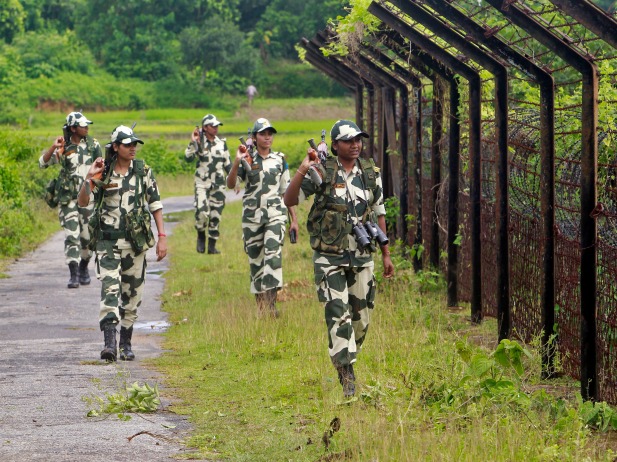
Highlights:
- Cancellations due to legal, environmental, and documentation issues
- BGMEA’s Munshiganj zone failed due to land, investor problems
- Sonadia zone scrapped to protect environment and biodiversity
- Private zones cancelled after proponents lost interest, failed submissions
- Interim government focusing on completing 10 key economic zones
Licences of 10 proposed economic zones (EZs), including BGMEA’s garment industrial park in Munshiganj, were revoked by the Bangladesh Economic Zones Authority (Beza) in April.
Beza, under the Yunus-led interim government, has opted to focus on completing just 10 zones instead of nearly 100 planned by the previous government. Canceling 10 EZs, it hinted that the development of the remaining ones would be left to the next elected government.
Although no specific reasons were cited during the cancellation announcement, conversations with Beza officials and stakeholders involved in these zones revealed several causes, such as the unwillingness of applicants to move forward, failure to submit required documents and a lack of environmental clearance from the environment ministry.
The decision was made during Beza’s 8th governing board meeting held on 13 April in Dhaka, chaired by board president and Chief Adviser Muhammad Yunus.
At a press conference after the meeting, Beza Executive Chairman Chowdhury Ashik Mahmud Bin Harun said, “The board, under the leadership of the chief adviser, decided to cancel the licences of these 10 zones. We do not believe these economic zones are necessary, which is why their licences have been revoked.”
The list of cancelled EZs includes five government zones and five private zones.
The cancelled government zones are: Sonadia Eco Tourism Park in Cox’s Bazar, Sundarban Tourism in Bagerhat, Gajaria Economic Zone in Munshiganj, Shreepur Economic Zone in Gazipur, and Mymensingh Economic Zone in Ishwarganj, Mymensingh.
The cancelled private zones are: Garment Industrial Park proposed by BGMEA in Munshiganj, Chatak Economic Zone in Sunamganj, Famkam Economic Zone in Bagerhat, City Special Economic Zone in Dhaka and Sonargaon Economic Zone in Narayanganj.
Why BGMEA’s EZ was cancelled
The proposed Garment Industrial Park in Munshiganj was planned on 470 acres of land, where the Bangladesh Garment Manufacturers and Exporters Association (BGMEA) intended to establish a dedicated industrial zone for the apparel sector. However, since the initiative began in 2013, not a single factory has been built on the site.
According to Beza sources, the licence was cancelled after repeated attempts to engage with the applicant failed to yield results. Despite several verbal communications, the BGMEA did not submit the required documents necessary for setting up the zone.
Former BGMEA president Faruque Hassan told TBS that there were complications regarding the land allocated for the park in Munshiganj.
“The land price was considered too high, and there were also issues related to the establishment of a power plant in the area. Because of these factors, no apparel entrepreneurs felt confident enough to invest there,” he said.
Faruque said that when the Mirsarai Economic Zone in Chattogram was later developed, land was allocated there specifically for BGMEA members. Additionally, many garment entrepreneurs acquired land in Mirsarai individually.
“Once Mirsarai zone is operational, the need for a garment cluster in Munshiganj becomes irrelevant to industry stakeholders,” he added.
It is worth mentioning that BGMEA has already signed a memorandum of understanding (MoU) with Beza to develop a Garments Village on 500 acres of land in the Mirsarai Economic Zone.
Reasons why other EZs were cancelled
Among the 10 EZs whose licences were cancelled by the Beza, each faced specific legal, environmental, or implementation-related setbacks.
Sonargaon Economic Zone Ltd, a project by Unique Group, received its pre-qualification licence from Beza in 2016. Its cancellation was based on a 2023 court verdict stemming from a writ petition filed by the Bangladesh Environmental Lawyers Association (Bela). Acting on this judgment, Beza’s governing board decided to revoke its licence.
For the Sonadia Eco Tourism Park in Cox’s Bazar, Beza officials stated it no longer had any development plans for the site. A letter was sent to the Cox’s Bazar deputy commissioner to initiate the process of transferring the 9,467 acres of land in Sonadia back to the Forest Department to protect the area’s environment and biodiversity.
Beza Executive Chairman Chowdhury Ashik Mahmud Bin Harun explained in a Facebook post that the decision was made in the interest of environmental protection.
“We’ve handed back Sonadia Island to the Forest Department for conservation,” he wrote. “Industrialisation and job creation are important, but not at the cost of the environment. I’ve said before — Bangladesh doesn’t need 100 economic zones. Even five well-planned green economic zones would transform the country.”
He also noted that in the original master plan for Mirsarai National Economic Zone, the Sitakunda forest area was included, but it has since been excluded. With 16,000 acres already acquired in Mirsarai, he said the zone has the potential to create 250,000 jobs, with additional land available in Matarbari.
“We don’t see the need to destroy forests for industrialisation,” he said, adding that unused land in Mirsarai is being considered for a 300 MW solar power project under a public-private partnership (PPP) model.
Ashik, who also serves as executive chairman of the Bangladesh Investment Development Authority (Bida), emphasised that the government is committed to promoting industry without harming nature. “We want to leave behind a greener country for the next generation,” he said.
Sonadia’s zone had initially been supported by the previous Prime Minister’s Office, which formed a five-member committee to advance the zone, but it never received clearance from the environment ministry, ultimately leading to its cancellation.
The Gajaria Economic Zone in Munshiganj was proposed on 97.98 acres of government land, but 46.21 acres were lost to river erosion. Legal disputes over the remaining land have made it impossible to proceed with the project, prompting its cancellation.
The Shreepur Economic Zone, initially planned on 510 acres in Maona and Dhanua mouzas of Gazipur’s Shreepur upazila, was also dropped after the establishment of the Japanese Economic Zone in Narayanganj, which served a similar purpose.
The Mymensingh Economic Zone faced land acquisition challenges. Although a proposal was made for 468 acres, of which 320.77 acres were privately owned, the high cost of acquisition led to the zone’s cancellation.
As for Famkam Economic Zone, City Special Economic Zone, and Chatak Economic Zone, Beza officials said that the private companies behind these proposals eventually lost interest and decided not to pursue the establishment of the zones. With no follow-up or required submissions, their licences were revoked as well.
Interim govt focusing on 10 EZs
The interim government plans to work on 10 economic zones. In the first phase, six zones will be completed with adequate utility connections (gas, electricity and water) and road infrastructure, before work commences on the remaining four, according to Beza officials familiar with the matter.
The 10 zones are National Special Economic Zone, Srihatta Economic Zone, Japanese Economic Zone, Maheshkhali Economic Zone, Jamalpur Economic Zone, Anwara Economic Zone, Sabrang Tourism Park, Chandpur Economic Zone, Kushtia Economic Zone and Bhutanese Economic Zone in Kurigram.









